
14 Highly Effective SEO Strategies for Software Companies
Looking for some proven SEO strategies to give your software company an edge in a competitive online marketplace?
Here are 14 effective SEO strategies to drive high-quality organic traffic to your company website, build more brand awareness, and position your software company as a leader in your market.
1. Register New Business Listings on High-Authority Software Websites
Many high-authority software directory websites will allow you to register a new business listing either for free or for a small fee. Getting your software company listed on these authoritative websites offers several key benefits including:
- Your new business listing will likely include a link back to your company website which will help improve your company’s rankings in Google, Bing, and other search engines.
- These websites are reliable sources of information that can increase your company's visibility and credibility in the market.
- These websites can drive high-quality traffic to your company website.
A few examples of authoritative software websites where you can register a new business listing include Capterra, Crozdesk, GoodFirms, and G2.
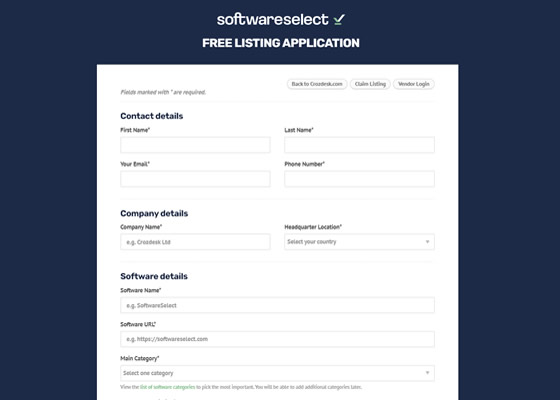
2. Publish Useful and Interesting Statistics
Does your software company ever do internal research or conduct customer surveys that generate statistics others would find interesting and valuable? If so, publishing these statistics on your company website can benefit your SEO efforts.
Statistics are highly linkable. When you provide statistics in your content, other companies, bloggers, and journalists may link back to the original source, giving you valuable backlinks. These backlinks can boost your company’s website rankings in Google and other search engines.
You can also position your company as an industry authority by providing interesting and valuable statistics on your website. This will increase trust among your website visitors and further improve the chance of website visitors turning into paying customers.
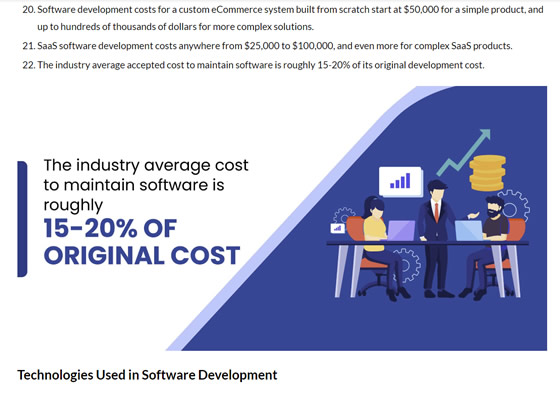
3. Maximize SERP Real Estate
Maximizing your real estate on search engine result pages (SERP) is all about optimizing your website and its content to take up as much space as possible on search result pages. This will not only make your website more visible to users, but it will also help lower the visibility of your competitors. Here are a few ways to help maximize your SERP real estate.
- Optimize For Featured Snippets: Google shows featured snippets at the top of search results to quickly answer users' questions. To optimize for featured snippets, consider creating clear, concise, and accurate content that directly answers the user's query. Also, use headings, lists, and tables to make your content easy to read and understand.
- Utilize Schema Markup: Schema markup is code you can place on your website to help search engines return more informative results for users. Schema markup can lead to rich snippets, such as reviews and FAQs, which take up more space on SERPs.
- Earn Site links: Site links are additional links to key pages of your website that appear under the main search result. While Google automatically generates site links, having a clear site structure and relevant internal linking can help increase the chance of site links appearing for your website.
- Run Google and Bing Ads: Paid ads also take up SERP real estate. If it's in your budget, consider running some paid ad campaigns to take up more real estate on SERPs and to also reduce the real estate of your competitors.
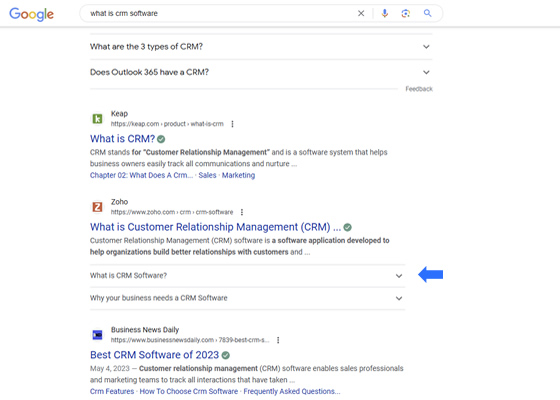
4. Create a Linkable Asset
A linkable asset is a high-quality piece of content or digital asset created to attract backlinks from other websites. Linkable assets are typically unique, valuable, and shareable to motivate others to link to them. Some examples of potential linkable assets for a software company include:
- In-depth Guides and Tutorials: Creating in-depth guides and tutorials is an effective strategy for building high-quality backlinks. If your guides and tutorials provide valuable information that can’t be found elsewhere on the web, other websites may link to them as a resource.
- Research and Case Studies: Conducting original research or publishing case studies related to your industry can be a powerful linkable asset.
- Free Tools and Software: Offering a free tool or a lite version of your software can also attract backlinks. If the tool provides real value, other sites may link to it as a resource for their users.
- Infographics: Infographics are a visually appealing way to present complex information or statistics. If infographics are well-designed and informative, they can attract backlinks from websites that want to share the information with their audience.
The key to creating effective linkable assets is to provide value. If other websites find your tool, research, or content valuable for their audience, they are more likely to link to it.
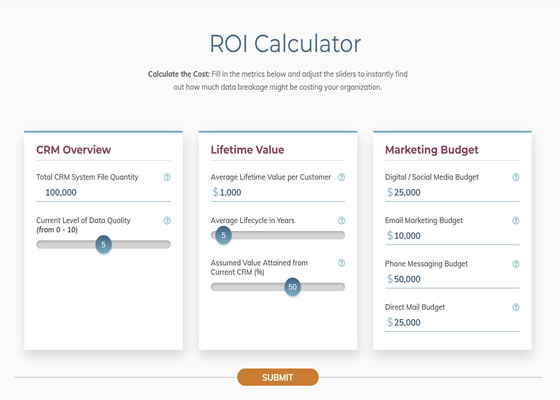
5. Create Topic Clusters
A topic cluster is a group of closely related content pages centered around a central topic. A topic cluster typically comprises a "pillar page," which provides a broad overview of a particular topic, and a series of "cluster pages," which are more in-depth blog posts or site pages that delve into specific aspects of that topic. These cluster pages link back to the pillar page, creating a web of interconnected content.
The use of topic clusters is beneficial for SEO for several reasons.
- Interlinking pages within a topic cluster can improve your website's authority on the topic and boost your search rankings because it signals to search engines that your content is both well organized and comprehensive.
- An interconnected structure on your website can lead to users spending more time on your page as they jump between linked pages. This can positively impact certain SEO metrics such as bounce rate and time on page, resulting in higher rankings.
- The structure of this format imitates how people search for information on the Internet. Typically, people start with a general search query and then refine their search. You can capture traffic at multiple stages of the search process by providing a broad overview and more detailed supporting pieces of content.
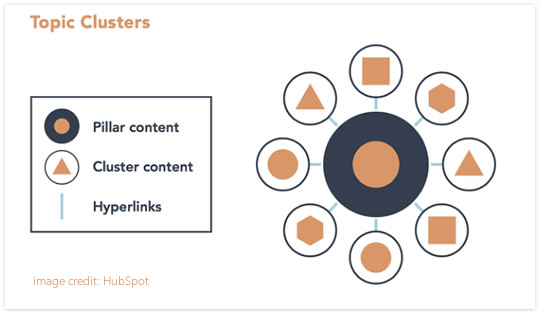
6. Build New Backlinks Through Unlinked Brand Mentions
You can use tools like Google Alerts or Ahrefs to track mentions of your brand across the web. These tools will notify you whenever your brand is mentioned online.
Identify instances where your brand is mentioned in a positive or neutral context but without a link back to your site. Send a nice message to the website owner or author thanking them for mentioning your brand and then request they please include a link to your website along with the brand mention. Be sure to provide them with the exact URL you want them to link to.
7. Run Paid Ads for Link Building
Paid advertising, such as Google Ads or paid social media ads, will increase the visibility of your content across the web. The more eyes you have on your content, the more shares, website visitors, and natural backlinks you can generate if your content is high-quality, valuable, and link worthy.
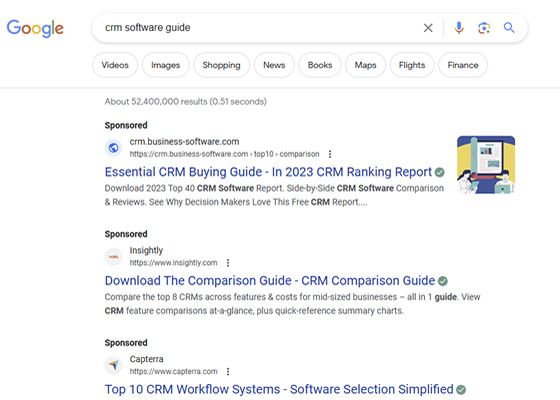
8. Claim Your Competitors' Dead Links
Link reclamation involves finding broken links that lead to your competitor's website and suggesting to the website owners that they replace these broken links with a link to a relevant page on your own website. Here's how you can do this.
You'll first need a tool like Ahrefs or SEMrush to find your competitor's broken backlinks. These tools can show you which of your competitor's pages have backlinks but return a 404 error.
Then, use the Wayback Machine to create superior content by examining the original content the broken link previously linked to. Adopt similar topics but produce a piece that is superior in quality and more useful to readers, then publish it on your website.
Once you have a great resource in place on your website, reach out to the owners of websites with broken links. Point out the broken link and suggest your content as a replacement for it. Explain why your content is a good fit and how it provides value to their readers.
Remember, only some website owners will respond to your outreach, and only some responses will be positive. However, with persistence and high-quality content, you can often reclaim a good portion of your competitors' dead backlinks.
9. Improve Your Click-Through Rate
Improving your website's click-through rate (CTR) from search result pages can drastically increase the overall traffic to your website. Here are a few good strategies to help improve CTR.
- Use Compelling Titles and Meta Descriptions: Your page titles and meta descriptions are the first thing users see in search results. Ensure they are persuasive, include your target keywords, and accurately represent the content on the page.
- Use Schema: By adding Schema to your website, you can help search engines better understand your content, resulting in visually appealing rich snippets and improving CTR.
- Adapt: Use A/B testing to experiment with different titles, meta descriptions, and content formats to see what works best for your audience.
Remember, improving CTR is often about standing out in the search results. Whether through compelling titles and descriptions or visually appealing rich snippets, the goal is to make users want to click on your listing.
10. Improve Time on Site with Animated Images and Videos
Using animated images and short videos on your website can significantly improve user experience, leading to longer visitor engagement times. This, in turn, can increase website traffic.
Here is a look at how animated images and short video clips can improve time on site.
- Visual Appeal: Animated images can make a webpage more visually appealing and engaging than static text and images. This can capture a visitor's attention and encourage them to explore your content more.
- Interactive Content: Animations can be used to create interactive content, such as quizzes, games, or interactive infographics. Interactive content can significantly increase user engagement and time on site.
- Product Demonstrations: Software companies can use animated images or videos to demonstrate essential features and functionality of their software product. This can provide value to visitors and keep them on your website longer.
Remember to use animations sparingly and appropriately. Too many animations can make a page look cluttered or unprofessional, and large animation files can slow down page load times, which can deter visitors.
11. Use Semantically Related Keywords
Semantically related keywords, or Latent Semantic Indexing (LSI) keywords, are words or phrases closely connected to your primary keyword. They provide context to your content, helping search engines better understand and accurately index it. Incorporating these keywords improves the overall relevance and quality of your content and also helps prevent the overuse of exact match keywords.
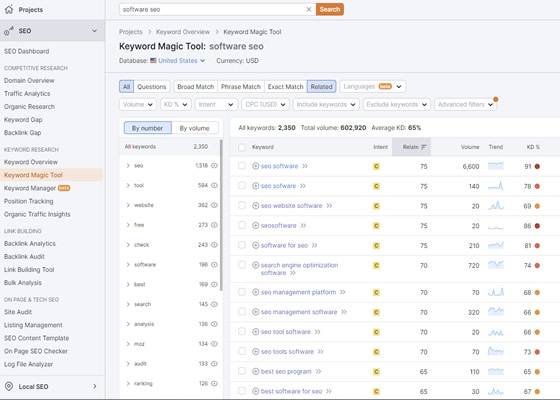
12. Include the Year in Content Titles
Including the year in the title of your articles can lead to several important benefits.
- Relevance and Freshness: Adding the year can signal to readers the content is current and up-to-date. This can be especially beneficial for topics where information changes regularly, such as technology. Readers often prefer the most recent information, and seeing the current year in the title can make them more likely to click.
- SEO Benefits: Many users include the year in their search queries. You can potentially rank higher for these queries by including the year in your page title.
- Increased Click-Through Rate (CTR): Users are often more likely to click on an article containing recent information.
Keep in mind that if you include the current year in your article titles, it is vital to keep the content updated to ensure it remains accurate and relevant. This might mean updating the article (and the year in the title) annually or as needed based on changes to the topic.

13. Target Comparison Keywords
Targeting comparison keywords for SEO purposes can be highly beneficial for several reasons:
- High Intent: Users often search for comparison terms when they are closer to making a software purchase decision. They have likely already done some initial research and are now comparing options to decide which product best fits their needs. If your site provides the information they're looking for, you have a good chance of converting these high-intent users.
- Less Competition: Comparison keywords are often long-tail, meaning they're more specific and less competitive than broader terms. While they might have lower search volumes, they can often be easier to rank for and attract highly targeted traffic.
- Trust and Authority: You can demonstrate your expertise and build trust with your audience by providing honest, thorough comparisons.
14. Focus on User Experience (UX)
Create a great overall user experience for your website visitors. User experience is essential for SEO because it can directly impact several factors that search engines use to determine your website's rankings. By providing a positive user experience, you can improve these factors and increase the chance of achieving higher rankings in search results.
Here are just a few of the many reasons UX is important for SEO.
- Core Web Vitals: These metrics include elements like loading time, interactivity, and visual stability. These metrics are now a part of Google's ranking algorithm, making UX more important than ever for SEO.
- User Engagement Metrics: Search engines also use various user engagement metrics such as bounce rate, time on page, and click-through rate (CTR) as ranking signals. If users consistently leave your site quickly (high bounce rate) or stay short (low time on page), this could indicate to search engines that your website provides a poor user experience.
- Mobile-Friendly Design: With most web searches now taking place on mobile devices, search engines prioritize mobile-friendly websites. If your website doesn't provide a good user experience on mobile, it could negatively impact your rankings in mobile search results.
Conclusion
Whether you're a startup looking to make your mark or an established software company seeking to take your company to next level, leveraging these 14 digital marketing strategies effectively can improve your online visibility and result in more leads and sales for your company.
If you're ready to take your software company to the next level online, don't leave your success up to chance. At Big Marketing, we specialize in crafting custom SEO strategies for software companies, just like yours. We understand the unique needs and challenges you face, and our experienced digital marketers are ready to help you overcome them. Request your free proposal and let us help you drive more high-quality traffic to your website, further build your brand, and position your company as a leader in your market!



Ready to Take Your Website to New Heights?
Take the first step in your company’s future
online success by requesting a SEO proposal today!
